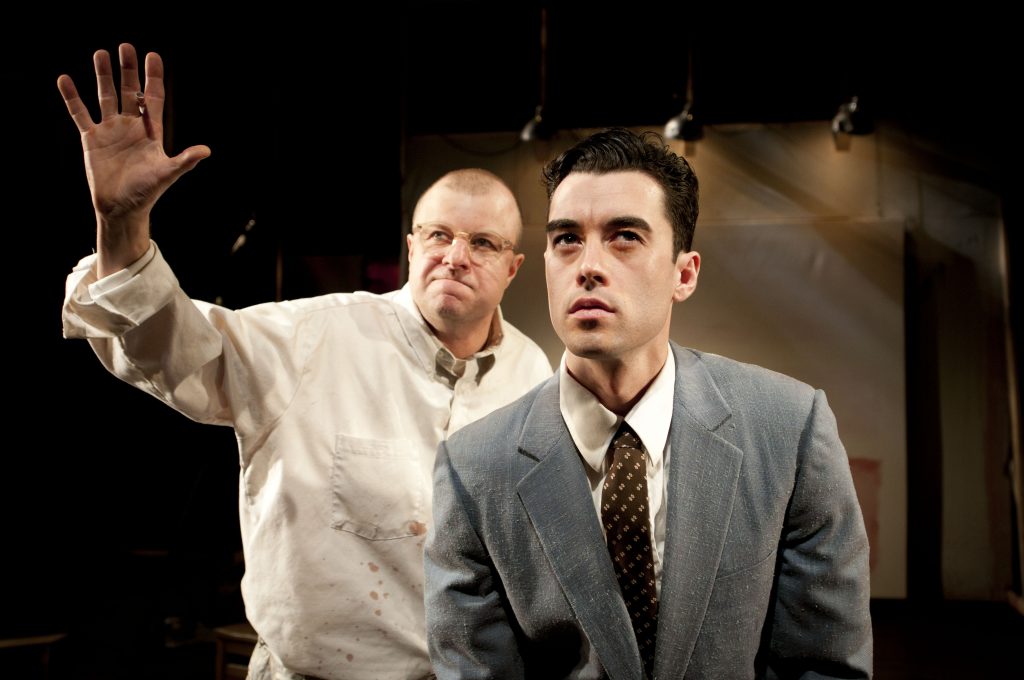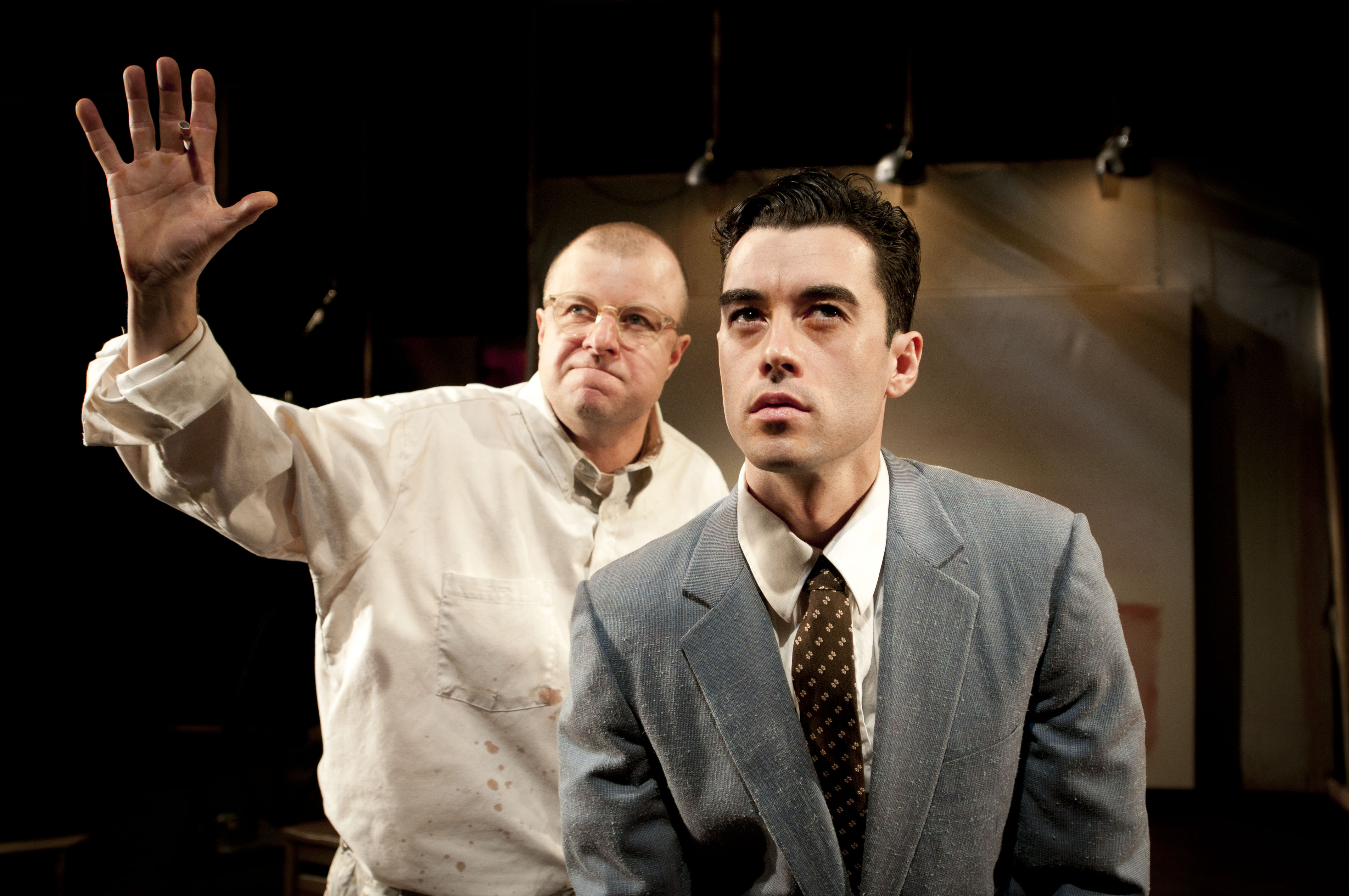
“What is red?” shouts Mark Rothko, as he begins on another of his impassioned, belligerent speeches.
Indeed RED, by Academy Award-nominated screenwriter and playwright John Logan, is riddled with so many torrential philosophical speeches that the audience nearly drowns in them. If you can follow Rothko’s vehement rants on the faceted layers of art, his own work and the work of his contemporaries, then you may walk away from RED enlightened.
However, you may also leave disappointed, as any person would who experiences as many climaxes in 96 minutes as RED presents, but no real satisfaction.
RED, directed by Governor General Award-winning actor and director Martha Henry, takes place over the two-year span in which it took abstract expressionist artist, Mark Rothko, to create a series of large scale murals for Manhattan’s Four Season’s restaurant. The play opens in 1958 as Rothko (played by Randy Hughson) is joined by a young new assistant, Ken (Jesse Aaron Dwyre). A fictionalized account of Rothko’s first attempt to create a space where one might interact and contemplate his artwork, RED portrays Rothko’s struggle with the idea that this project is an insult to his artistic integrity. Throughout the play, Rothko’s notion of art and meaning is challenged by Ken, a dilettante artist with a tragic past.
Hughson as Rothko is vivid and enigmatic. His portrayal of Rothko, the aging, frustrated artist struggling with his own significance is three-dimensional and lively. He commands the stage, shadowing the less dynamic Dwyre. Initially, this overpowering seems intentional, juxtaposing the dominant character of Rothko against the submissive character of Ken. However, when the focus shifts to Ken, as his character begins to come into his own, Dwyre’s emotional portrayal pales in comparison to Hughson and the audience is unable to engage with him as much.
The play takes place in a single location, the studio Rothko rented when he was painting the Four Season murals. Eo Sharp has constructed a set that is said to be accurate to the actual studio Rothko used. Indeed, Sharp’s set is reflective of what one would presume an artist’s studio to look like, down to the worn, dirty furniture and the amalgamation of canvases in various stages of completion.
There is no intermission and the scene changes are done in a half blackout, flowing seamlessly with the rhythm of the play. Time’s passage is marked by comments pertaining to the progress of the series of murals. Costume changes are, for the most part, done on stage, but with a naturalness that is easily accepted by the audience as organic to the world of the play.
Logan has created a philosophically heavy play that seems to serve as a biography of Rothko, an illustration of his methods and mentality. The audience is berated with speeches that preach on all manner of subjects, from the work of Nietzsche, to the reasoning of Pollock, to expostulations on the nature of Rothko’s work and the meaning of the colours red and black. These speeches are thought provoking, but the sheer number of them and the way they are angrily thrown out at the bewildered audience results in the alienation of said audience. Indeed, as the play ran on, the speeches became monotonous and some audience members were seen to be dozing off.
“You have been weighed in the balance and found wanting,” quotes Rothko from Rembrandt’s painting “Belshazzar’s Feast.” Verily, Logan’s RED has been weighed and found wanting.
RED runs until Dec. 16 at The Segal Centre. For showtimes and ticket information visit segalcentre.org
Watch the play’s trailer:




